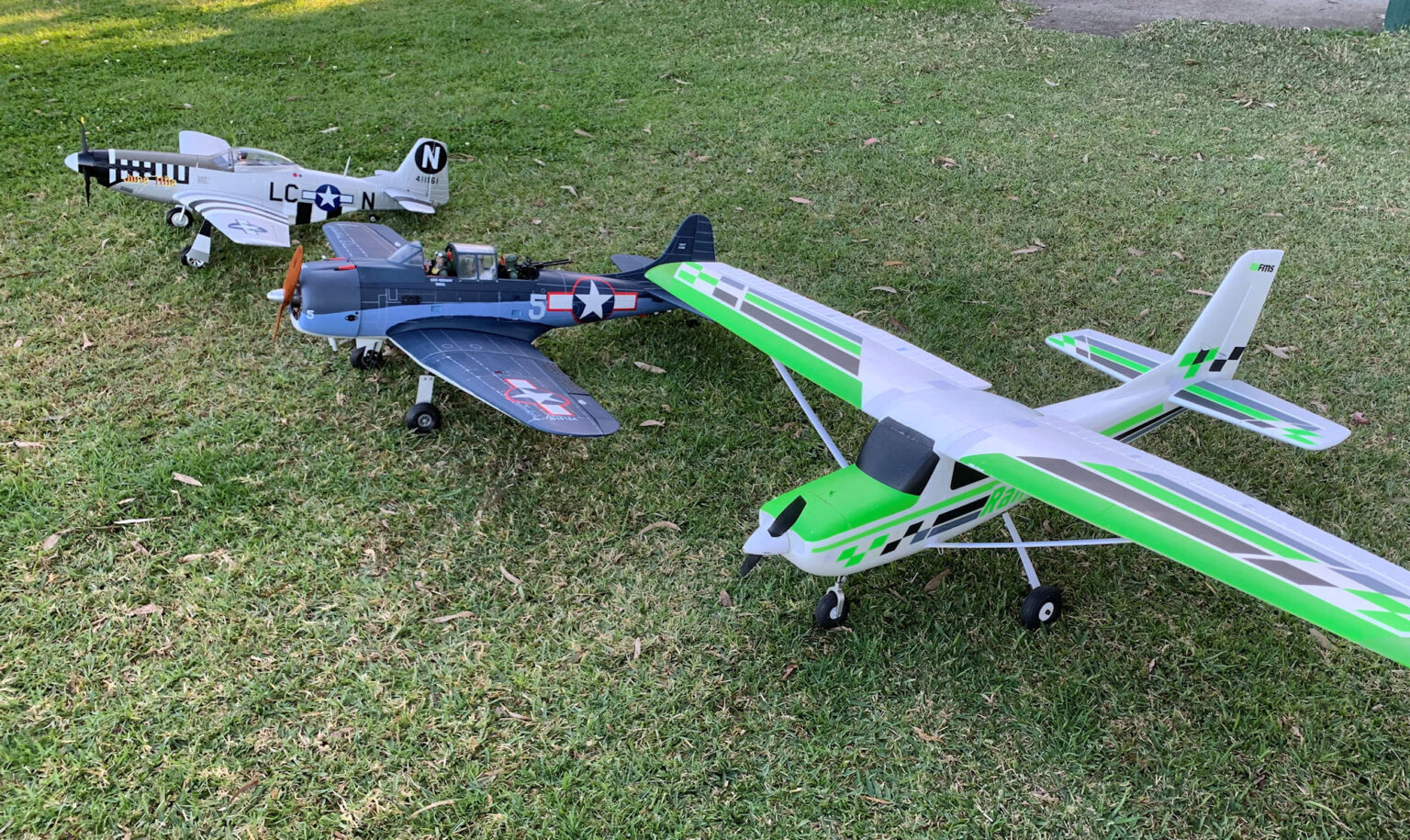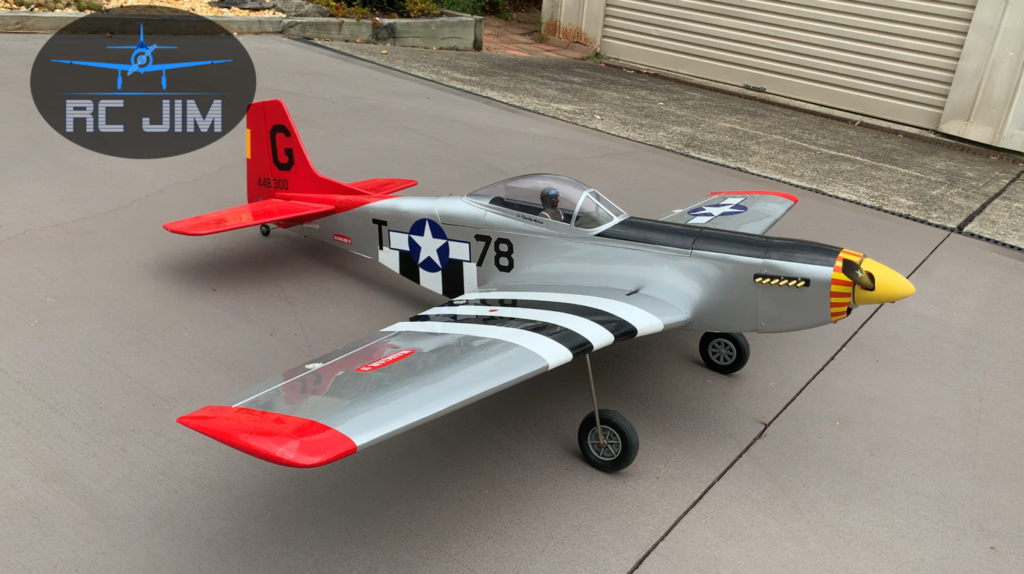I happen to own two North American P-51 aircraft. Oh, I should mention that they are radio controlled models! None the less, they are exciting to fly, and I love to make low level passes with them and imagine what it would be like inside flying them. Unfortunately, on one rather windy day earlier this year I was flying my Hangar9 Red Tail P-51, and it was handling a bit weird. To make it worse, as I was coming in to land, as I came over the trees at the end of the runway, I hit some turbulence and the plane stalled. As P-51s love to do, it immediately dropped the nose. I hit the throttle, hoping to recover, but only managed to hit the ground at a great rate of knots!
The damage was pretty horrible, as you can see on my damage assessment video. A smashed fibreglass cowl, mangled front of the fuselage, plus nearly broken in half in the middle. I really liked that plane, so I decided to repair it. There were numerous issues along the way, but we eventually got it completed. Again, you can find a series of videos on our YouTube channel that walks you through each aspect of the repair.
In coming near the end, I got thinking that it would be good to be a little more true to the original. In particular, Hangar9 had put a white, Caucasian pilot in it. Apart from a few commanders in the early days of the Tuskegees, all of their pilots were African-Americans. Then I got searching for Dan Willoghby, the pilot named on the side of the plane, and I couldn’t find anything on him on the internet, and I even went through a list of the Tuskegee airmen, and couldn’t find him. Nor could I find anything on “Amazin’ Grace,” the name of the plane. It’s a name I love, but it was a bit of an issue.
So, I got looking for a worthy Tuskegee Airman pilot to have in my plane. I came up with General Charles McGee. He didn’t become a general until late in life, and it was an honorary title granted by the US Congress, but a worthy one.
Charles had a grandfather, who had been a slave. His dad did a number of things in life. He was a teacher, a church minister, and served as an infantry chaplain in World War I. Charles was at university studying engineering when Pearl Harbour was hit and America officially entered World War II. It was looking like he would be drafted, and having heard from his father what war was like on the ground, he wasn’t real keen on that. But he also heard of a bit of an experiment that the US Army was doing in training black men to be aviators and support personnel at Tuskegee. So, he signed up for that.
Entry criteria was really tough, but he made it in. A couple of days before being sworn in he married his wife, whom he stayed with until her death. Perhaps you are picking up on some things that I found really appealing about choosing him. A Christian, trained – at least partially – as an engineer, fighting against the culture of the day to do something that he really wanted, and finding the love of his life and sticking with her through thick and thin. That’s my kind of guy.
So, Chuck was sent to Italy and began flying missions in February 1944. During that year he flew 137 missions. I read somewhere that he is one of the few fighter pilots who shot down three enemy fighters in one day. I think they were Me109’s, from memory. Following his deployment to Italy he was returned to the States where he became an instructor for B-25 bomber pilots. I suppose that as he had protected so many of them, he could give the pilots some ideas on how to avoid getting shot down.
Speaking of that, the Tuskegee Airmen had an outstanding record for bringing home their bombers safe. Rather than chase after enemy fighters, they would engage them when they were threatening their bombers, but if they were hightailing it for home, they would let them go, and protect the bombers from others coming in after them. Out of 179 bomber escort missions, each of which would have had something like 100 bombers in it, they only lost 27 bombers. In 172 of their missions, they didn’t lose any.
Charles McGee went on to fly in two more wars: Korea and Vietnam, clocking up a total of 405 combat missions. He continued in the airforce in various command positions until retirement. In 2020, with support from the Air Force, the US Congress passed a bill to grant Charles McGee an honorary promotion to the rank of Brigadier General. He passed away in January 2022 at the age of 102.
But perhaps the most outstanding achievement in his life was his character. He has been described as a person who was humble, kind, and constantly encouraging others. When asked about it, he attributed that to his “lifetime devotion to Jesus Christ.” He wanted to be an example to young people in his family, his community and in his military service.https://en.wikipedia.org/wiki/Charles_McGee_(pilot)#Later_life_and_death


